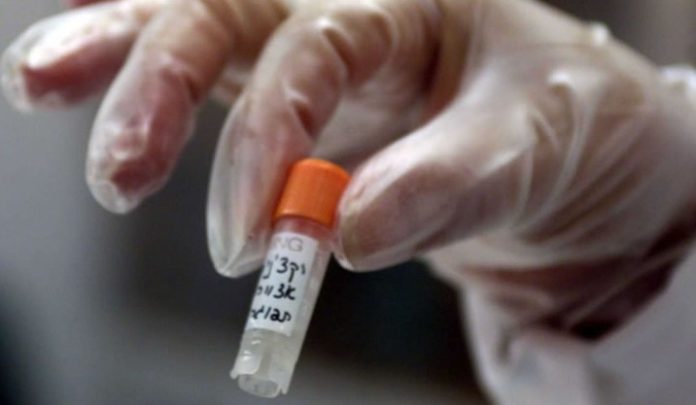
A leading Ebola researcher from the University of Texas Medical Branch at Galveston has gone on record stating that a blend of three monoclonal antibodies can completely protect monkeys against a lethal dose of Ebola virus up to 5 days after infection, at a time when the disease is severe.
Dr. Thomas Geisbert, professor of microbiology and immunology, has written an editorial for the journal Nature discussing advances in Ebola treatment research. According to Dr. Geitbert, recent laboratory analyses indicate that an effective treatment for the virus may already be a reality.
The filoviruses known as Ebola virus and Marburg virus are among the most deadly pathogens known to man, with fatality rates of up to 90 percent. The current outbreak in West Africa has sickened more than 3,000 people, killing over half of those infected.
Culmination of nearly four decades of research
Since the discovery of Ebola in 1976, researchers have been actively working on treatments to combat the virulent infection. Studies over the past decade have uncovered three treatments that offer partial protection for monkeys against Ebola when given within an hour of virus exposure.
One of these treatments, a VSV-based vaccine was used in 2009 to treat a laboratory worker in Germany shortly after she was accidentally stuck with a needle possibly contaminated by an Ebola-infected animal. (VSV stands for Vesicular Stomatitis Virus, a highly cytopathic virus being developed as a vaccine vector due to its ability to induce strong protective T cell and antibody responses after a single dose). The laboratory worker survived, but it is unclear whether this was because she had not been exposed to Ebola or because the vaccine protected her.
Further advances have been made that can completely protect monkeys against Ebola using small ‘interfering’ RNAs and various combinations of antibodies. But these treatments need to be given within two days of Ebola exposure.
“So although these approaches are highly important and can be used to treat known exposures, the need for treatments that can protect at later times after infection was paramount,” said Dr. Geisbert.
Further research led to a cocktail of monoclonal antibodies that protected 43 percent of monkeys when given as late as five days after Ebola exposure, at a time when the clinical signs of the disease are showing. And another therapy that combines monoclonal antibodies with interferon-α (a protein that stimulates an antiviral response) was found to provide almost complete protection of macaques when given 3 days after exposure. At that early stage, however, clinical signs of the disease are only just beginning to be seen and may not be readily apparent.
A ‘monumental achievement’
Most recently, in a new study published in Nature, Dr. Xiangguo Qui and colleagues at Mapp Biopharmaceutical Inc. used the experimental ZMapp to treat monkeys given a lethal dose of Ebola. All of the animals survived and did not show any evidence of the virus in their systems 21 days after infection, even after receiving the treatment 5 days after infection. They also showed that ZMapp inhibits replication of the Ebola virus in cell culture.
“The development of ZMapp and its success in treating monkeys at an advanced stage of Ebola infection is a monumental achievement,” said Dr. Geisbert.
ZMapp is a monoclonal antibody, a common disease-tackling approach that has been used by scientists for some time now. In fact, the novel drug actually stems from research that started in the pre-antibiotic era, when passive serotherapy was the primary disease-fighting mechanism. This line of research dried up once antibiotics were developed, but many scientists believe that passive serotherapy and other antimicrobial remedies such as such as bacteriophage therapy and probiotics could become increasingly important as more and more diseases develop resistance to antibiotics. Additionally, the CDC considers passive serotherapy to be the most promising countermeasure to bioterrorism, as it can prevent disease even after exposure to an infectious agent.
ZMapp has been used experimentally to treat several patients on ‘compassionate grounds‘. Of these, two US healthcare workers have recovered from the virus, although whether ZMapp had any effect is unknown, as about 40 percent of patients in this outbreak survive without treatment. There were also two patients treated with ZMapp who did not survive, but this may be because the treatment was administered too late in the disease course.
“The diversity of strains and species of the Ebola and Marburg filoviruses is an obstacle for all candidate treatments,” said Dr. Geisbert. “Treatments that may protect against one species of Ebola will probably not protect against a different species of the virus, and may not protect against a different strain within the species.”
Potentially complicating matters even more, a new study published this week found that the strain responsible for the current outbreak in West Africa has mutated rapidly since it first emerged. The virus acquired 50 new mutations in the first month of the outbreak alone, accumulating a total of nearly 400 mutations thus far. While we don’t yet know how these mutations might affect treatment response, the findings underscore the urgency of ending the outbreak before the virus acquires additional, potentially more dangerous mutations.
Although we certainly need treatments for filovirus infections, the most effective way to manage and control future outbreaks might be through vaccines, some of which have been designed to protect against multiple species and strains. During outbreaks, single-injection vaccines are needed to ensure rapid use and protection.
At least five preventative vaccines have been reported to completely protect monkeys against Ebola and Marburg infection, said Dr. Geisbert. But only the VSV-based vaccines have been shown to complete protect monkeys against Ebola after a single injection.
“Antibody therapies and several other strategies should be included in the arsenal of interventions for controlling future Ebola outbreaks,” said Dr. Geisbert. “Although ZMAPP in particular has been administered for compassionate use, the next crucial step will be to formally assess its safety and effectiveness.”
